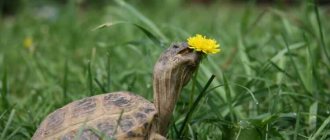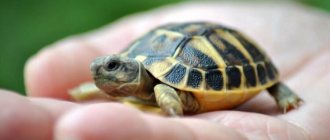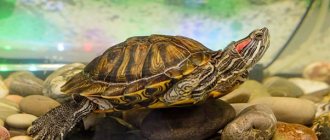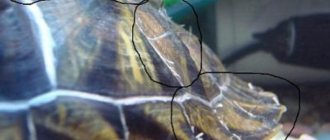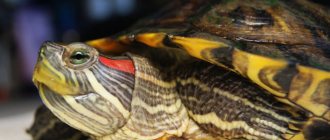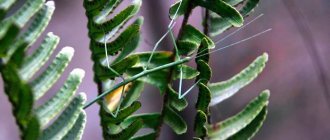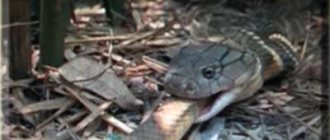Wild herbs
Dandelion
Dandelion is a famous plant that everyone knows. Also very popular among children to blow them away. Just take a few dandelion leaves and feed them to your turtle, it will definitely benefit him.
Plantain
Plantain is very high on the menu of our turtles. There is no need to explain what kind of plants these are. It's quite famous.
Chamomile
Little daisies, white and cute and a treat for every turtle. Commonly grown in our home gardens, it serves a large number of turtle meals as a nutritional supplement.
Magnolia
They form a family of flowering plants (Magnoliophyta), which belong to the Saxifragaceae, formerly Rosales. Plants of this family can live for a long time in humid places, and their thick leaves can withstand dry seasons. Thus, they are one of the leafy succulents. Succulents are plants that store water (Latin: “succus” = “juice”).
Field bindweed
What is bindweed, and where can you easily find it? You can find more information about bindweed here under the article
Nettle
Nettles have their own importance throughout the world and are also excellent for turtles' diets. Yes, it has protection, but the plant does not harm reptiles, and, most likely, the opposite. Turtles love to eat it because it has a specific taste for them.
Blackberry
Blackberries are another attraction and treat for turtles. It should be included in the diet only in rare cases, due to the high level of fructose, which is harmful to the animal. But white blackberry flowers can be served at any time.
cat ear
Cat's ear plant. Yes, an unusual name. Let's move on to the description of what exactly is hidden behind this grass. The plant received this name because of the strange shape of the leaves. They grow in forests and swamps. They are good food for turtles, as the leaves are thick and contain many minerals.
Hirsch, what exactly does this plant represent? One thing is certainly known and that is that Hirsch is a good food for reptiles and therefore for turtles as well.
Gold Taubnessel
Taubnessel Gold belongs to the herbal family and serves as an ideal nutritional supplement for everyday meals.
Grass
Grass (hay) grows almost everywhere. Since turtles need a little free space, therefore, in a terrarium, or in an aquarium, you can use grass not only as food, but also add it for more comfortable living. But do not forget that even dry grass (hay) is eaten by turtles in large quantities.
Poppy sees is different because its large flowers and their color stand out in every garden. Not only do turtles pounce on poppy seeds because of the bright color, but the taste is just as good.
Clover
Clover is the perfect addition to your "everyday grass." From time to time, a little clover can be added to the turtles' food, and they will thank you. You shouldn’t feed turtles the same thing, as this can negatively affect the reptiles.
Mallow
Not only is mallow used in herbal medicine as an important nutritional supplement, but turtles love the purple flowers most, which is mallow.
Primrose
Primulas, especially the evening primrose family, are quite valuable for their healing oils. Many homeopathic creams and ointments contain oils from plants of this species. And for turtles, of course, they will also benefit. Turtles love variety, and primroses, which have a variety of flowers, will do just fine.
Chicory
Chicory is usually found on the side of fields. Chicory belongs to the chicory family and is an important component in many medicinal preparations for men. It is very beneficial for turtles, especially for males, so the consumption of chicory should be present in the animal’s diet
Wik is a wildflower that you can pick when you are going out for your daily walk. Especially suitable for energetic turtles.
Thistle
Thistle is very happy to be eaten by turtles. There are different types of burdock, so there are no restrictions on flavors. And because of the strong smell, turtles love it very much.
Alfalfa
Alfalfa belongs to the clover family. Thus, this plant is also very suitable against obesity among other types of food for your pets.
Cultivated plants
Basil
Basil is also known as the King Herb and is often used in Italian cuisine. Because of their intense aroma, these plants are very popular not only among people, but also among turtles, which you love.
borage
Borage, also known as borage or Kukumerkraut, is an herb that gives a special flavor, a burst of activity and vigor. For this reason, turtles love this grass.
In some countries, borage is also used as a medicinal plant.
Raspberries
Sweet raspberries belong to the red raspberry genus and are quite popular as a medicinal food additive. Because of the fructose, it is recommended not to give raspberries to turtles very often.
Wild Rocket (arugula wild rocket)
This plant belongs to the cruciferous family. Wild Rocket, or wild rocket, is also known in various countries as a spice and salads.
Cherry
Cherries are also part of the same family as raspberries. One of the most widespread fruit trees. Often cherries are either sweet or sour. Therefore, he believes that it should be rarely provided in the diet of turtles and then only as a medicine.
Sunflower
The sunflower is not only a beautiful flower to look at, but also a treat for turtles. They can eat the yellow leaves with ease and the wonderful aroma will give them a lot of energy.
Zucchini
Zucchini, a member of the squash family, are available in a variety of types and shapes. Turtles eat a lot of the flowers of the squash plant, which are usually yellow in color.
All types of vegetables
Important! It is very important for turtles to carefully select their diet among vegetables. Many contain a lot of sugar, and this is bad for the health of turtles.
The apple also belongs to the Rosaceae family. Since there are many different varieties of apple, we will describe it here only in general terms. Apples are a good food for turtles. They also have a good effect on health, so they can also be used as treatment. It should be remembered that the pieces should not be too large and instead of a small amount of feed, due to fructose.
Carrot
Carrot, otherwise carrot is a vegetable. It is the second largest by volume of vegetables in the EU. Turtles love to chew on it. Because of the orange color, turtles are very good at paying attention to it.
Grape
Originally used in wine production for many years, but grapes are good food. For turtles, you only need to remove the skin of the grapes, and then the turtles will eat them with pleasure
Salad
Lettuce is part of the plant family Valerianaceae. There are many types of lettuce. Lamb's lettuce is most suitable for reptiles. This type of salad is also known as Rapunzel. This lettuce is mainly grown in Eurasia, North America and North Africa. Corn salad is an excellent nutritional supplement for turtles, but it must be grown in your own garden. Field lettuces available in supermarkets tend to be loaded with pesticides, so they are not healthy for turtles, which is why it is best grown at home.
Ornamental plants
Yes, without a doubt, among the ornamental plants there will be those plants that are suitable as food for turtles. Although sometimes it is not very noticeable, because sometimes they are just decoration. However, those who actually make plants for this purpose in the aquarium know a lot about the matter. After all, the condition of turtles is affected not only by their care and nutrition, but also by the environment of the aquarium itself. And the more diverse it is, the better it will be for the turtles.
An ornamental plant is a plant that has the main purpose of pleasing the human eye. Despite the fact that only humans understand this, beauty has always had a good effect on animals, and turtles are no exception. In a terrarium, they provide some variety and a beautiful appearance.
It is worth choosing the plant carefully. They must be moisture resistant, not lose the brightness of their color, and, of course, be edible. For example, Java moss. It is quite beautiful to look at, does not have any unpleasant odors, and is quite rich in vitamins. It is considered an ornamental plant, but if your pet eats it, he will be happy. However, various plants that serve as decoration quickly become uninteresting for turtles, so they should be changed frequently. Turtles - they usually get used to ornamental plants within a short time and consume them with passion at the same rate.
Hibiscus
Hibiscus, better known by its German name "Marshmallow". The original name of hibiscus comes from the Latin word "Hibiscum". Since there are over 300 different species of hibiscus, this plant is found in all flower colors. From white to yellow and red.
Rosaceae family
Rose petals are varied and come in many different colors. The Rosaceae family often grows in the garden or we enjoy making bouquets with them, and all species are suitable for this. There are many special varieties of this flower, there is even a black one.
Violet
Violets, also called Latin viola, are a very popular ornamental plant. Purple color has more than 500 shades and is represented all over the world. The main production center of this flower is Japan and the Andean region of South America.
Keeping a land turtle at home
A turtle at home requires placement in an aquarium, terrarium or enclosure. There are many reasons for this. Crawling freely around the apartment, your pet may encounter such dangers as:
- dust that exists in every apartment - it can settle and accumulate on a turtle’s shell;
- bacteria that can cause various diseases;
- drafts;
- unsuitable temperature and humidity of the room where the animal crawls;
- lack of ultraviolet radiation, due to which the turtle may lack some vitamins that the body produces when exposed to sunlight;
- other domestic animals, for example, cats or dogs, and even the person himself can injure the land creature.
Caring for a land turtle
Any land turtle needs proper care, which includes maintaining the cleanliness of its home, itself, and ensuring a proper lifestyle. So, how to care for a land turtle:
- feed regularly and variedly in accordance with one or another habitual diet;
- bathe in warm water every week - this gives land turtles great pleasure, in addition, it helps to increase appetite and good intestinal function;
- take care of the claws - in captivity they do not have time to grind down as they grow, so they need to be trimmed periodically with a special nail clipper;
- take it out for walks in the fresh air - on warm and sunny days it is very useful to give the turtle the opportunity to walk in the open air, but you need to constantly monitor it, since it can disappear from sight in the depths of the grasses in a very short time.
What to feed a land turtle?
A natural question for novice tortoise lovers is: what to feed a land tortoise at home? Their main diet consists of plant foods - berries, fruits, vegetables, grass. It is best to feed them a mixture of different ingredients - this way their diet will be varied and balanced. You can put food on a flat saucer, the main thing is that it is convenient for the turtle to eat from it. The vegetable and fruit menu in the summer can and should be diversified with clover, dandelions, sorrel, sprouted oats, and pea leaves.
Vitamins for land turtles
Vitamin and mineral supplements are desirable in the diet of land turtles kept at home. Carbonate, bone meal, ground eggshells, and glycerophosphate can be used as mineral additives. They should be given at the rate of 100 mg per 1 kg of animal weight. As for vitamins, the Central Asian domestic land turtle needs natural sources of vitamins A, B12 and D3. You should not give her oil preparations and vitamin D2. She must get everything she needs from food.
Edible and poisonous plants for turtles.
Details Parent Category: Exotic Pets Category: Turtles Published 03/06/2016 12:59
After you purchase a turtle, you will need to take care of how and what to feed your new favorite pet.
After all, turtles, like small children, love to put everything in their mouths. Therefore, before offering any plants as food to your pet, you need to find out whether they will harm the health of the reptile.
What plants can be used to decorate a terrarium?
Have you decided to decorate your aquarium, but don’t know what plants to plant there? Be extremely careful when choosing aquatic and semi-aquatic plants. There is no doubt that the turtle will definitely taste all the plantings.
Examples of plants that can be used to decorate a terrarium:
duckweed, spirogyra, elodea, hornwort, ludwigia, Brazilian pinnate, clumps of filamentous algae.
Aquatic plants are therefore only suitable for aquatic turtles.
Other examples of safe plant foods for turtles (fruits, vegetables, wild flowers, houseplants and more):
aloe, basil, oregano, clover, leaves and twigs of fruit and berry trees, plantain, dandelion leaves and flowers, sprouted oats.
In small amounts, you can add to your turtle's diet:
spinach, white cabbage, peas, bean sprouts. It is unacceptable to feed these products in large quantities, since they contain oxalates, iodine deficiency leads to an increase in goiter, radishes, radishes, mustard, tomatoes that are too rich in phosphorus interfere with the absorption of calcium, you should also limit the turtle’s consumption of asparagus, cauliflower, and rhubarb.
Plants prohibited for feeding turtles
Do not, under any circumstances, feed your turtles the following plants:
azalea, begonia, jasmine, narcissus.
Plants belonging to the nightshade family (for example, petunia and physalis), ranunculaceae (for example, delphinium and buttercup), medicinal species, and also those containing alkaloids are considered poisonous to turtles.
General rules for feeding turtles with different types of plants
In the summer, the basis of the reptile’s diet can be free and widely available food, for example, plantain, dandelion, burdock (it is advisable not to collect them along the sides of highways and places where dogs are frequently walked). If you have a garden plot, it is not forbidden to feed your pet beet or carrot tops.
If you don’t have a summer house, you can find an alternative among indoor plants. Turtles can eat geranium, mint, violet, and hibiscus. For the winter, plants and herbs can be dried or frozen. Also, in the cold season, when the shortage of fresh greens is most severe, turtles happily eat hay - an excellent source of coarse fiber.
- Forward >
What to feed a land turtle?
These animals are among the most unpretentious. Turtles eat little and do not require special care - they are not difficult to keep at home. All land turtles are herbivorous reptiles. As mentioned above, their diet consists of 95% plant foods and 5% animal foods. Feeding food that is inappropriate for this group, such as meat, is fraught with diseases.
What does the turtle like?
Turtles' favorite foods are lettuce and dandelion leaves - they can even be dried for the winter. She is also partial to vegetables and fruits. The main food consists of almost all plants, vegetables, fruits, and berries that are non-poisonous to turtles. You can feed field grasses and houseplants, such as: aloe, pea stems and leaves, tradescantia, alfalfa, timothy, lawn grass, plantain, gooseberry, rhubarb, sprouted oats, barley, thistle, sorrel, coltsfoot.
The vegetable menu consists of peppers, beans, pumpkin, carrots, zucchini, radishes, beets, artichokes, this list will be supplemented by cucumber and horseradish, which should not be given in large quantities.
It is allowed to feed land turtles with a variety of fruits and berries: apples, apricots, plums, peaches, mangoes, bananas, oranges, tangerines, watermelon, raspberries, strawberries, blueberries, wild strawberries, blackberries, blueberries. Additional complementary foods include: mushrooms, dry commercial feed, dry sea cabbage, young sunflower seeds, soybean meal, bran.
Shouldn't be given to turtles
It is undesirable to feed onions, garlic, spinach, spicy herbs, grasshoppers, crickets, domestic cockroaches, poisonous insects, cherries, eggshells (causes salmonellosis), or feed one type of vegetable or fruit.
Prohibited foods include:
- potato,
- medicinal products containing alkaloids,
- indoor (dieffenbachia, euphorbia, azalea, elodea, ambulia, oleander, elodea.
- vitamin D2 and the drug gamavit (they are toxic to reptiles).
- milk, bread, citrus peels, seeds from fruits and berries, pet food, “human” food, including cereals (with the exception of rolled oats, which are not boiled, but soaked in water or vegetable juice, it should be given no more than once a day). month), meat, any prepared foods.
Poor nutrition causes irreversible changes in the animal’s liver, which can cause its life to be much shorter.
Tips for feeding turtles
Feeding pets should be regular. You should not leave them without food for a long time unless there are any significant reasons for this.
Products must not contain toxins.
Large pieces of meat, fish, vegetables or fruits must be cut into small pieces to prevent the turtle from choking.
Berries and fruits must be pitted.
Overfeeding a turtle is strictly prohibited. If the animal does not finish eating the food, then the leftovers should be removed.
Pregnant individuals are fed at least once a day. They require large amounts of vitamin D, calcium and multivitamins.
Specialized feeds should be given to the species of turtles for which they are produced.
Food for the turtle should be at room temperature.
Typically, aquatic turtles are fed using tweezers, but food can be thrown into the aquarium provided that excess food is removed from the water in a timely manner. Experts recommend feeding aquatic turtles in a bowl of water specially designated for them, which will help avoid rapid contamination of the aquarium. Land species can be fed without tweezers.
If your pet does not react to food for more than two weeks, it urgently needs to be taken to a veterinarian for examination. Lack of appetite usually indicates that the animal is sick with something.
Young turtles need to be given more animal food, adults - plant food.
In order to maintain a sufficient level of minerals in the turtle's body, the reptile must be fed with bone meal, which can be purchased at a pet store. The daily norm for an adult is 5 g of flour.
To prevent health, the turtle shell can be sprayed with a special spray once every 2 days.
You should feed your pet dry food no more than 3 times a day. Experts do not recommend buying low-quality products that lack vitamins.
The turtle should be given vitamins before eating the main meal, while the reptile is still hungry. If oil vitamins are used, then they are dripped onto granules or sticks of dry food and, completely saturated, thrown into the aquarium.
At first it may seem that keeping a turtle will be difficult, but knowing the basic rules of feeding, it will not be difficult for you to create a diet for your pet. With proper nutrition, your turtle will live a healthy, long life.
List of prohibited products
If you feed your turtle incorrectly, irreversible pathological processes in the liver may occur. The introduction of prohibited foods to the menu can cause the death of your pet.
Their list is very extensive. It is prohibited to give to reptiles:
- spicy herbs;
- herbs rich in alkaloids;
- onion and garlic;
- potato;
- zest;
- milk;
- cat and dog food;
- eggshells, as they can be contaminated with bacteria of the genus Salmonella;
- poisonous indoor plants (water plague, oleander, limnophila, azalea, spurge, dieffenbachia);
- domestic cockroaches, crickets and grasshoppers;
- vitamin D2, since it is poisonous;
- dishes from the owners' table: sausages, sausages, cheese, porridge (you can give rolled oats, which need to be steamed and not boiled), canned food, fried and boiled food.
The turtle needs love too
It is very important to understand that a turtle is a living creature that requires care and attention, and not a toy that can be played with and left to the mercy of fate. If you have chosen these unique reptiles, take a responsible approach to the question of what to feed your turtle at home.
After all, the health and life of your pet depends on it. The more seriously you take the conditions of its existence, the longer the turtle will be able to please you. When buying a turtle, contact experienced sellers who can tell you what to feed a water turtle at home and what to feed a land turtle, so that later you don’t have to guess why your pet died, because you fed it.
It turns out that if a turtle is not fed correctly, it begins to be capricious, eat poorly, or even refuse food altogether. or steppe turtles are no exception. In order for your pet to feel at ease, properly structure your baby’s diet.
What to feed the Central Asian land turtle?
Let's start with the fact that absolutely all turtles love plant foods. Healthy plants include cabbage, pumpkin, watermelon, melon, lettuce, apples and dandelions. They will not refuse berries - raspberries, cherries and strawberries. Milk with white bread soaked in it will also appeal to the armored animal.
What else is possible? Calcium is necessary for building and maintaining the strength of the bone cover - the shell. Therefore, fresh cottage cheese must be present on the menu. Semolina and buckwheat porridge will usefully enrich the list of food products.
Three groups of turtles
Based on their feeding type, turtles are divided into three groups: carnivores, omnivores and herbivores.
. Each of them corresponds to a certain ratio of animal and plant foods. Feeding inappropriate food for each group of turtles is fraught with diseases of the internal organs, digestive complications, and metabolic problems. You also need to include calcium and vitamins in your diet weekly. What food should be given to each group?
Predatory
The food of predatory turtles should consist of 80% animal food and 20% plant food. This group includes almost all aquatic species and all young aquatic ones, such as young red-eared, caiman, trionics, swamp, musky, etc.
The main food for them is:
- lean fish, live or thawed, with entrails and small bones. For young turtles, the fish should be finely chopped (spine, excluding ribs) with bones, for adults - whole or large pieces. Large bones can be ground or finely chopped.
- beef or chicken liver is given once a week;
- seafood such as green (not pink) shrimp, sea cocktail;
- mammals (small): naked mice, rat pups, runners.
The turtle can eat all seafood, as well as fish, only raw; heat-treated food should not be given;
Additional food
, which should be given once a week, serves:
- Dry food for freshwater turtles, for example, in the form of sticks, tablets, flakes, granules, capsules, Sulfur, etc.
- Insects: moth, food cockroaches, grasshoppers, bloodworms, crickets, earthworms, gammarus and so on;
- Mollusks, amphibians, invertebrates: slugs, frogs, small snails with shells, tadpoles and similar swamps.
It is prohibited to give to predatory turtles:
meat (beef, chicken, pork, lamb, sausages, sausage, any type of minced meat, etc.), as well as fatty fish, milk, cheese, bread, fruit, dog or cat food, etc.
The diet of this group of turtles should consist of 50 percent animal food
and 50 – vegetable. Omnivorous turtles include semi-aquatic and adult aquatic turtles, some types of land turtles: spiny turtles, coora turtles, adult red-eared turtles, Spengler's turtles, red-footed turtles (coal turtles), etc.
Their menu consists of half animal food, see the list above, and half plant food, the list is below. Aquatic turtles are pampered with fish
and seafood (as animal food), and mice are given to land animals.
- Plant food for aquatic species are plants growing in water conditions,
- Land animals are given plants that live on the ground, and fruits and vegetables are added to them.
Herbivores
The menu of this group of turtles is based on plant foods, which make up 95% of the total diet, animal food consists of 5%.
Herbivores include: all land turtles, including radiated, flat, Central Asian, Greek, spider and others.
The main food of this group is:
- greens, it makes up 80% of the entire menu (semi-dry or fresh salads, edible leaves, flowers, succulents, herbs.
- vegetables - 15% of the diet (pumpkin, cucumbers, zucchini, carrots...)
- fruits that are not very sweet (apples, pears, etc.) are represented in 5% of the menu.
Additional food
once a week, it includes:
- non-poisonous mushrooms, such as russula, boletus, champignons, etc.
- dry balanced food for land turtles of the brands “Sera”, “Tetra”, “Zumed”.
- other: soybean meal, dry yeast, raw young sunflower seeds, bran, dried seaweed...
It is prohibited to give meat; this category includes: any minced meat, sausages, sausage, chicken, beef, pork, etc.). Also fish, milk, cheese, cat or dog food, bread...
Food in summer and winter
Summer feeding of land turtles is usually not difficult, because fresh herbs, vegetables, fruits, and berries can be easily picked or purchased.
Food should be prepared for the winter. Greens can be cut and frozen in the refrigerator, dividing them into daily portions. You can do the same with fruits and vegetables. Forbs can also be prepared in the form of hay.
If there are fish in the house, then you can plant an abundance of aquatic plants in the aquarium and feed your land pet with them in winter.
In the terrarium you can also install clay pots in which alfalfa, oats, wheat stalks, plantain, dandelion sprouts, and cultivated varieties of greens grow. All types of land turtles happily eat sprouted carrot tops.
How and what to feed a turtle: general features
Rational and balanced nutrition
Like the diet of other pets, the diet of any type of turtle should be rational and balanced. A harmonious menu of different types of products, including both plant and animal foods, is necessary for turtles of all types
It is also important to ensure that these animals always have access to a shallow bowl of water, which needs to be changed daily.
It is important to maintain regular nutrition. An adult turtle of medium size should eat at least half a head of lettuce or at least another amount of other food every day.
If your turtle eats almost nothing, you should definitely pay attention to this: it is likely that your pet is sick. It is advisable to get a scale and periodically weigh the animal, noting fluctuations in its weight, in order to promptly notice the occurrence of problems with your pet’s health.
The importance of calcium in food
It is especially important for turtles to have calcium in their food, which ensures their shell and bone strength. Since there is almost no this important element in plants, it is worth purchasing vitamin supplements containing calcium and adding them to the turtle’s food
It is important to follow the dosage of such supplements, since excessive use will have adverse effects on the animal.
Feeding turtles at home
When wondering what to feed a turtle at home, you should first of all focus on the type of animal, depending on which the choice of rational nutrition is made.
Choosing food that is inappropriate for a particular type of turtle can lead to metabolic disorders in the animal and problems with digestion.
How to organize feeding a turtle
You can feed your turtle in different ways:
- placing food in the water of the aquarium;
- from tweezers;
- leaving food on the sushi island in the aquarium;
- outside the aquarium if you do not want to pollute the water with food debris.
Is it necessary to include mineral and vitamin supplements?
Additional fortified supplements are required for young individuals in whom the formation of the bone skeleton, strengthening and construction of the shell occurs. It is during this period that they require increased levels of calcium.
So what supplements should be included in the reptile menu:
- Every day you should add ground bone meal to your food. A pinch is enough for small turtles, but for adults it is recommended to add 1 teaspoon to the aquarium every 7 days;
- You can mix special vitamins into the food. Dosages are usually indicated in the instructions;
- You can include fortified feed mixtures in the menu.
What to feed your turtle?
In the wild, the land turtle obtains its own food. These animals love to eat grass, various algae, roots, and berries. The owner's first task when keeping a reptile of this species should be to provide proper and balanced nutrition.
Note! The further condition and development of the pet will depend on a well-designed diet.
It is important that the menu included various mineral components and vitamins that will ensure the growth of the pet
A turtle at home should eat the following food:
- greens - clover leaves, wheat germ, leaves, dandelion flowers, coltsfoot, parsley stems and leaves, lettuce leaves, aloe;
- various vegetable crops. Amphibians are especially fond of carrot roots, cabbage leaves, green peas, beets, pumpkins, zucchini, tomatoes, and fresh cucumbers;
- Freshwater animals gobble up various types of berries for their sweet souls. To feed them you can use cherries, currants, raspberries, grapes, strawberries;
- Be sure to include a sufficient amount of fruit in your diet.
To make feeding comfortable, all hard fruits and vegetables can be cut into small pieces. Bananas and soft berries can be given whole. Before giving fruit from them, all seeds must be completely removed, otherwise the reptile may choke on them.
What else can you feed a land turtle at home? An amphibian's menu must contain protein foods. It is required to maintain vitality, active growth and development of the reptile. Protein foods include various mucus, worms, and boiled lean meat can also be given. But under no circumstances should you include various cockroaches and crickets in your pet’s diet. It is better to purchase red worms at a pet store.
What to feed a land turtle at home
Turtles are classified as omnivores. What does a land turtle kept at home eat? It is advisable to include not only plant foods in the diet. Twice a week you should give a turtle kept at home snails, crickets, and worms. Your pet will happily eat fresh fruits, vegetables and berries: melons, apples, tomatoes, carrots, broccoli. Always balance your turtle's diet. Some of them prefer sweet fruits, which should be alternated with other foods to ensure that their diet is full of nutrients and minerals. Leafy greens are an excellent addition to this animal's diet.
Among the favorite delicacies of turtles are:
It is advisable to buy turtle food at a pet store to supplement the diet with some vitamins that they lack in captivity.
Feed your pet turtles a plant-based diet:
- clover and dandelions;
- parsley and lettuce;
- carrots and cabbage;
- raspberries and grapes;
- apricots and plums;
- bananas, apples, oranges.
By using these tasty foods in your pet's diet, you can provide her with an ideal environment in your home.
We should not forget that the turtle needs to be fed dry food (sea kale, seeds, champignons, bran, dry yeast, etc.)
Feeding with artificial feed
This is the best choice for busy people who do not have time to prepare a diet for a turtle or cut up food. Pet stores have special balanced food for red-eared turtles in tablets, granules, flakes and capsules. In fact, they are food for fish, but improved taking into account the needs of the reptile's body.
There are times when a turtle does not like the pungent smell of such food; it turns away from artificial food, but after a while it still gets used to it. Its main disadvantage is the high price.
Description
The low carapace (carapace) is almost oval; if you look at it from above, you can see that the width in the back is slightly wider than in the front. The length of the shell is 20 cm or more in adult large turtles. Since water has always been the key habitat for turtles, the carapace scutes naturally fit perfectly together. In terms of their structure, the carapace and plastron are completely streamlined and have no protrusions. Large claws are located on the legs, small membranes are located between the toes. The claws of a swamp turtle can easily tear prey apart and can significantly scratch your hand. The tail of this turtle is relatively long, can reach 3/4 of the length of the carapace (about 12 cm) and during swimming it takes part as an auxiliary rudder during any turns (the main steering is carried out by the legs) and as a counterweight that holds the turtle in the required position during maneuvers. The carapace usually has a dark olive, dark green, sometimes almost black color, the plastron is light, yellowish. The shell, neck, head, legs are covered with small light spots. Often females have yellow eyes, while males are slightly reddish. Females have slightly shorter tails than males.
Habitat
The European marsh turtle is common in temperate climates. Lives in Central and Southern Europe, Western Asia, America, Western Europe (Belarus, Ukraine, Lithuania), North-West Africa. In Russia, it is distributed in the warm temperate climate zone of the European part. The habitat ranges from the Smolensk region at the border with Belarus, Ukraine to the south (Caucasus, Caspian Lowland, Transcaucasia), in the middle Volga, in the upper and lower reaches of the Don and the left bank of the Ural River. The turtle lives on slowly flowing rivers, ponds, and lakes with flat banks and muddy bottoms.
Reproduction
In the spring comes marriage time. During this period, turtles (age 6–8 years and shell 9–12 cm) are far from water bodies. Turtles can also mate in water. The sperm of turtles can be stored in the female’s tract for up to 1 year or more; as a result, a female caught in the wild can “personally” lay completely full-fledged eggs after 5-6 months. Between May and July, females lay eggs three times in holes dug in the ground. During the season, the female produces 1–3 clutches. The depth of the pits is approximately 10 cm. The eggs that fall into them are beautiful: their shells are snow-white, they themselves have an oblong, regular shape, size 30 x 20 millimeters, weight approximately 8 g. In any clutch there are about 5–10 eggs, and they The female buries it most carefully. After approximately 2-3 months, these eggs produce tiny turtles about 24–25 millimeters long, weighing 5 g, with a large yolk sac on the belly. The shell of young turtles is usually dark brown with yellow lines. They dig small tunnels near the nest, where they spend the winter in most cases. In the spring, turtles crawl out of their shelters onto the surface of the earth and begin an independent life. The incubation temperature is about 25–30°C and the duration is 54–90 days. Incubation humidity 90%. The water depth for newly born turtles is approximately 5 cm. Young individuals feed on daphnia and insect larvae.
What greens do turtles eat?
- 1.1 Dandelion
- 1.2 Plantain
- 1.3 Chamomile
- 1.4 Magnolia
- 1.5 Field bindweed
- 1.6 Nettle
- 1.7 Blackberry
- 1.8 Cat's ear
Interesting materials:
What is Bazarov denying at the present time? What happens if you don't go to the toilet for a long time? What happens if you eat chalk all the time? What happens if you pick your nose all the time? What happens if you listen to classical music all the time? What happens if you turn off your computer during defragmentation? What will happen to the Vremya i Steklo group? What was in the 100 year time capsule? What does a pilot do during a flight? What do brain cells do during sleep?
Feeding the turtle
For the normal development of a turtle, a varied diet is needed, including fresh vegetables (lettuce, cucumbers, cabbage, tomatoes, carrots, pumpkin), greens (dandelion, plantain, coltsfoot). At the same time, we must not forget that the turtle loves most - fruits (watermelon, melon, apple) and berries (strawberries, raspberries, cherries).
She is not averse to dining on cooled semolina or buckwheat porridge, and will also not refuse oatmeal prepared in the traditional way.
To prevent her from getting sick from a lack of nutrients, cottage cheese, boiled eggs, and raw minced meat should be added to the main diet. At the same time, there is no need to give her something to drink, since she gets most of her liquid from vegetables and fruits, and besides, she can drink while taking a bath.
The diet of an aquatic turtle is mainly meat and fish, but it will not refuse snails, worms, mice, etc. But this does not mean that she should not be given food of plant origin. It should be at least 30% in the diet of an aquatic turtle.

